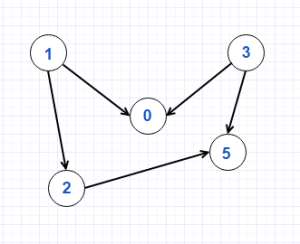Inspired by Digraph (Algorithms 4/e) – Algorithms, 4th Edition
Digraph.java
//Digraph implementation with adjacency list
public class Digraph<V>{
private Map<V,List<DirectedEdge<V>>> vertexes;
private int eCount;
public Digraph(){
this.vertexes = new HashMap<>();
}
public int V(){
return vertexes.size();
}
public int E(){
return eCount;
}
public List<DirectedEdge<V>> adj(V vertex){
return vertexes.get(vertex);
}
public void addEdge(DirectedEdge<V> de){
if (de == null){
return;
}
if (!vertexes.containsKey(de.from())){
vertexes.put(de.from(), new ArrayList<>());
}
if (!vertexes.containsKey(de.to())){
vertexes.put(de.to(), new ArrayList<>());
}
vertexes.get(de.from()).add(de);
++eCount;
}
//O(V+E)
public List<DirectedEdge<V>> getEdges(){
List<DirectedEdge<V>> res = new ArrayList<DirectedEdge<V>>(eCount);
for (V v : vertexes.keySet()){
res.addAll(vertexes.get(v));
}
return res;
}
public Set<V> getVertexes(){
return vertexes.keySet();
}
}
DirectedEdge.java
public class DirectedEdge<V>{
private V from;
private V to;
public DirectedEdge(V from, V to){
this.from = from;
this.to = to;
}
public V from(){
return from;
}
public V to(){
return to;
}
@Override
public String toString(){
return from.toString() + "-->" + to.toString();
}
}


